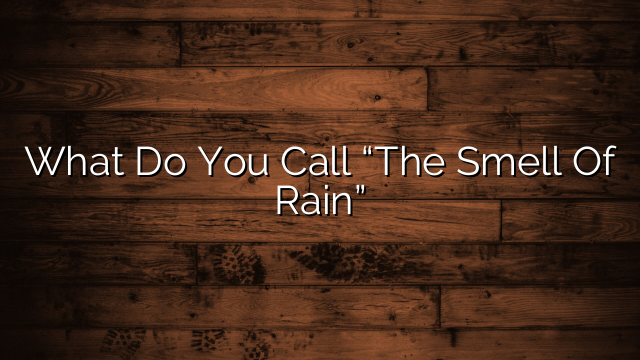Rain, a phenomenon that has captivated humanity for centuries, holds within it a unique olfactory experience that is both familiar and elusive.
Often described as the ‘smell of rain,’ this distinct aroma has intrigued scientists and laypeople alike, prompting questions about its origins and composition.
Like an enigmatic melody that stirs our emotions, the smell of rain lingers in our memories, evoking nostalgia and a sense of connection to nature.
In this article, we delve into the mysterious world of petrichor – the scientific term for the smell of rain – exploring its origins, the chemistry behind its creation, and the factors that contribute to its aromatic allure.
By understanding and appreciating this sensory delight on a deeper level, we can truly embrace and savor one of nature’s most captivating fragrances.
Key Takeaways
- Rain’s scent, known as petrichor, is created when rain interacts with compounds in dry soil.
- Exposure to the smell of rain can evoke positive emotions such as happiness and nostalgia.
- The smell of rain is influenced by factors such as vegetation, soil composition, and pollution levels.
- Rain’s scent symbolizes new beginnings and cleansing processes and triggers nostalgia and a sense of longing or sentimentality.
The Origins of Petrichor
The phenomenon known as petrichor, which refers to the distinct smell of rain on dry soil, has its origins in the interaction between raindrops and certain compounds present in the earth. When rain falls on dry ground, it releases these compounds into the air, creating a unique scent that is often described as pleasant and refreshing.
The cultural significance of rain’s scent can be seen in various societies where rainfall is considered a blessing or associated with renewal and fertility. Additionally, petrichor has been found to have psychological effects on individuals. Studies have shown that exposure to the smell of rain can evoke positive emotions such as happiness and nostalgia.
The association between this scent and feelings of joy or contentment may stem from its connection to natural elements and a sense of harmony with the environment.
The Chemistry Behind Rain’s Aroma
A deeper understanding of rain’s aroma can be achieved by examining its chemical composition. The role of volatile organic compounds (VOCs) in rain’s aroma is significant. VOCs are carbon-based chemicals that easily evaporate into the air. They are released from various sources such as plants, soil, and human activities.
When raindrops hit the ground or other surfaces, these VOCs are released into the air, creating a distinct smell known as petrichor. The specific combination and concentration of VOCs determine the unique scent of each rainfall event.
Additionally, temperature plays a crucial role in the release of rain’s scent. Warmer temperatures increase the rate at which VOCs evaporate and contribute to a stronger aroma.
Understanding the chemistry behind rain’s aroma enhances our appreciation for this natural phenomenon and provides insights into its environmental impact.
Factors That Contribute to the Smell of Rain
Factors such as the type and concentration of volatile organic compounds (VOCs) released during rainfall, in conjunction with temperature variations, contribute to the distinct aroma associated with rain. The smell of rain is influenced by various environmental factors. Here are three key factors that affect the smell of rain:
-
Vegetation: The scent of rain can be influenced by the surrounding vegetation. Plants release certain VOCs when it rains, which can mix with other compounds in the air and create a unique fragrance.
-
Soil composition: Different types of soil contain varying amounts of organic matter and microorganisms. When it rains, these substances interact with water molecules, leading to the production of specific odors.
-
Pollution levels: Air pollutants can react with rainwater and alter its chemical composition, resulting in a different smell compared to clean rainfall.
The aroma associated with rain holds cultural significance in many societies across the world. It is often portrayed as refreshing and symbolizes new beginnings or cleansing processes. Understanding the factors that contribute to this distinctive smell enhances our appreciation for nature’s olfactory wonders.
The Nostalgic Effect of Rain’s Scent
Rain’s scent has a nostalgic effect that can transport individuals to past memories and evoke a sense of longing or sentimentality. The emotional connections associated with the smell of rain are deeply ingrained in human experiences, making it a powerful trigger for reminiscing.
This phenomenon is not limited to specific cultural backgrounds but is universally recognized and appreciated. Rain’s scent holds cultural significance across various societies, often symbolizing renewal, cleansing, and rebirth. It can also serve as a metaphorical representation of collective emotions such as melancholy or tranquility.
The evocative power of rain’s scent lies in its ability to tap into personal and collective memories, allowing individuals to connect with their pasts on an emotional level. Understanding the nostalgic effect of rain’s scent helps us appreciate the intricate relationship between our senses and our memories.
Ways to Enjoy and Embrace the Smell of Rain
To fully appreciate and immerse oneself in the olfactory experience of rain, individuals can explore various methods that allow them to embrace and enjoy its scent.
One way to do this is by engaging in rainy day activities that involve being outdoors during a light drizzle or shower. Taking a walk in the rain or simply standing outside with an open umbrella can provide an opportunity to breathe in the fresh scent of rainfall.
Another method is by capturing rain’s fragrance in candles. These candles are specifically designed to replicate the smell of rain and can be lit indoors, creating a cozy atmosphere reminiscent of a rainy day.
By engaging in these activities and incorporating rain-scented candles into their environment, individuals can fully embrace and enjoy the unique aroma that accompanies rainfall.
Frequently Asked Questions
What are the different types of rain smells that people experience?
Rain smells can vary depending on different factors such as geographical location, temperature, and presence of pollutants. The scents of rain include earthy, fresh, petrichor-like odors, as well as metallic or ozone-like smells caused by chemical reactions between raindrops and atmospheric compounds.
Can the smell of rain be harmful to our health?
The smell of rain does not have any harmful effects on our health. It is primarily associated with positive mental well-being due to its calming and nostalgic properties. The scientific explanation behind the smell of rain involves a combination of factors such as petrichor, geosmin, and ozone.
Is there a connection between the smell of rain and the intensity of rainfall?
The smell of rain, known as petrichor, is a result of the connection between rain and plants. This scent has been found to have a positive effect on mood, enhancing feelings of relaxation and happiness. Additionally, studies suggest that the intensity of rainfall can impact the strength of the petrichor fragrance.
Are there any cultural or regional differences in how people perceive the smell of rain?
Cultural and regional differences in perceiving the smell of rain exist. Rain scent is often mentioned in literature and poetry, reflecting its significance in various cultures. Traditional weather forecasting methods also rely on the smell of rain.
Can the smell of rain be artificially replicated or used in products?
Artificial rain scent can be replicated and used in various products. Rain scented products evoke a nostalgic sensation, reminiscent of a fresh, earthy aroma after rainfall. The replication process involves capturing and recreating the specific chemical compounds responsible for the unique smell of rain.
Conclusion
In conclusion, the phenomenon known as petrichor, the smell of rain, holds a captivating allure that transcends our senses. Its origins lie in the combination of various compounds released when raindrops hit the earth’s surface.
The chemistry behind this aroma is a fascinating interplay of microscopic particles and organic matter. Factors such as humidity levels and plant oils contribute to the unique scent we associate with rain.
Beyond its scientific explanation, the nostalgic effect it evokes in us symbolizes a connection to nature and a reminder of simpler times. Embrace and enjoy this enchanting fragrance whenever it graces your presence.



